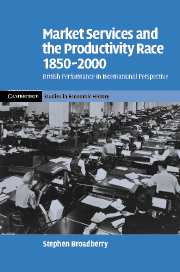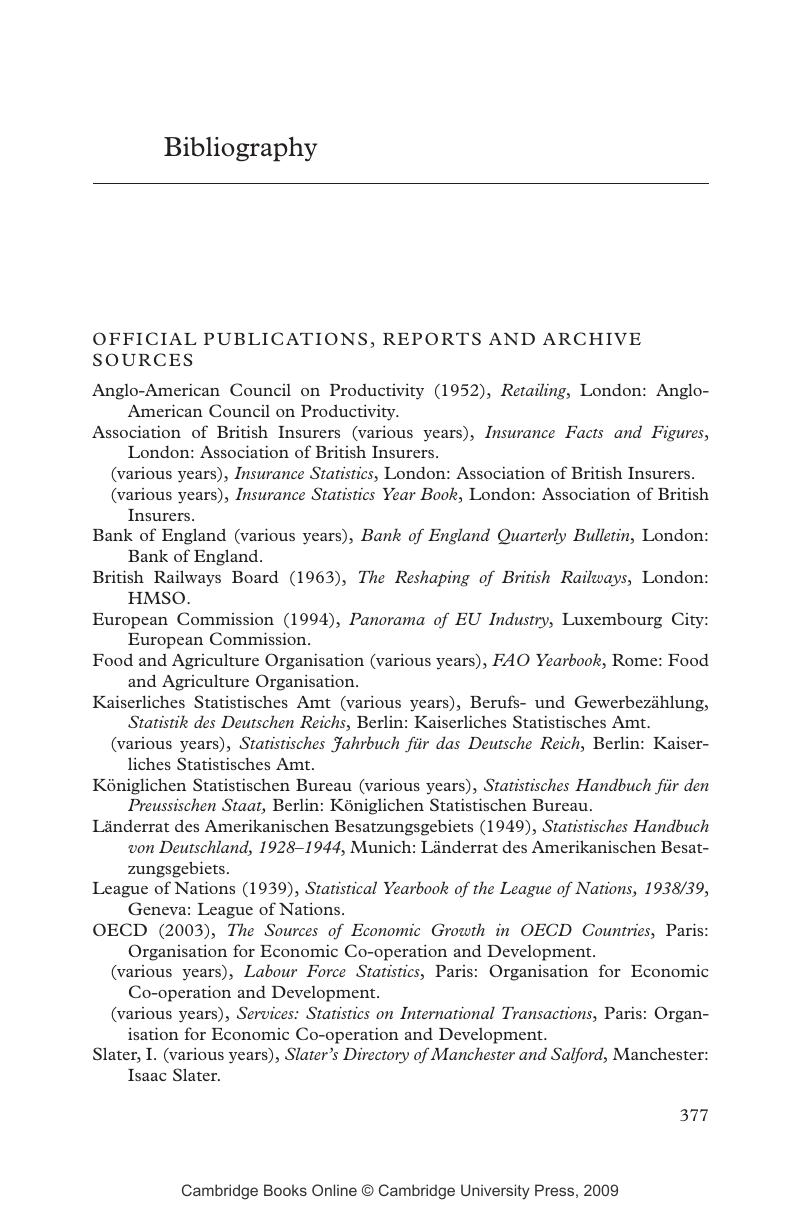 Market Services and the Productivity Race, 1850–2000
Market Services and the Productivity Race, 1850–2000 Book contents
Bibliography
Published online by Cambridge University Press: 25 July 2009
Summary

- Type
- Chapter
- Information
- Market Services and the Productivity Race, 1850–2000British Performance in International Perspective, pp. 377 - 403Publisher: Cambridge University PressPrint publication year: 2006


